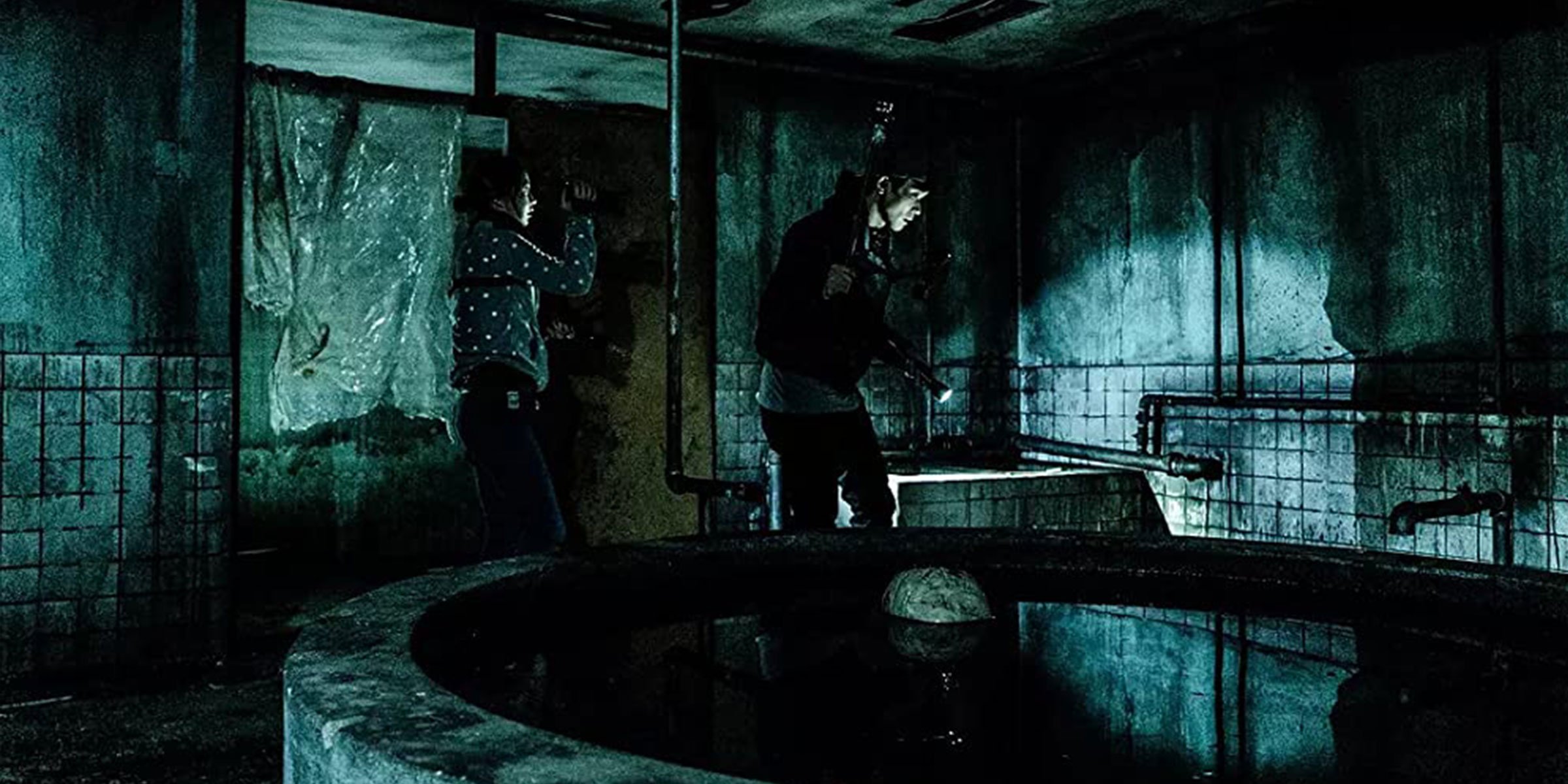Review: Gonjiam: Haunted Asylum
Sometime ago, I asked for Korean horror movie recommendations as an icebreaker on the language app HelloTalk, and the reply that stood out was "곤지암 - it is really horrible." With a few replies from others in agreement, the one to see was clearly Gonjiam: Haunted Asylum. Unsurprisingly, Gonjiam's plot is the age-old tale of "a group of thrill-seeking skeptic young people go looking for trouble and aren’t prepared when they find it." Surprisingly, director Jung Bumshik found ways to make it uniquely chilling.
YouTuber Hajoon (Wi Hajoon, affectionately referred to as Squid Game’s Officer Handsome), host of the web show “Horror Times,” recruits six friends to help him film an exploration of the psychiatric hospital, with a grand finale of breaking open the forever-sealed door to Room 402. Gonjiam has a real-life reputation for being one of South Korea's most haunted locations, with its spot on CNN's list of "7 freakiest places on the planet" in 2012, making it an exceedingly hot spot for ghost hunters. In context of the movie, there are rumors of ghosts of tortured patients occupying the hospital, of Room 402 holding Gonjiam's curse, and of the mysterious deaths and disappearances of anyone who'd tried to enter.
The found footage genre generally has a bad reputation, but Gonjiam does it right with steady cameras—a lot of them—and excellent, charismatic acting. A light-hearted rapport is established between the characters early on that saves them from looking like total strangers pretending to be close friends; their interactions feel real, and it only gets more real as their professionalism chips away while they proceed on their tour. Each of them, with the exception of Hajoon, is equipped with GoPros to capture their respective reactions and points-of-view simultaneously, surveillance cameras are set up in the areas anticipating the most activity, they've got a drone, and even a VR camera.
The drone in particular instantly reminded me of 2016's reboot Blair Witch, which offered a similar promise of found footage using modern technology where its legendary predecessor The Blair Witch Project made something innovative using the bare minimum. However, the drone was essentially a toy, and Blair Witch’s too-high budget doubled back to undo the atmospheric tension created by real-life subtlety. Gonjiam takes the same approach, but it’s used to create a relatable and immersive experience, further amplified by the absence of loud sound effects and lack of music (besides the spooky mood music added to the stream).
While the rest of them enter the hospital to grapple with its rumored inhabitants, Hajoon hangs back to run their livestream and watch all the surveillance cameras. The film’s editing is portrayed as him choosing the best viewpoints from each camera, of which we’re some of many viewers (until connections start breaking). This is just another way that Gonjiam uses modern film technology to its fullest; though it’s not via video chat platform like in Unfriended (2014) and Host (2020), the livestream setting still serves adequate purpose. It's in watching over everyone that Hajoon's intentions come through clearly—his one goal is to rack up 1,000,000 views. He plans to ensure success by rigging scares for the group, and being the first to open the door to Room 402, and as the night goes on it becomes clear that he'll risk anything for those sweet, sweet likes.
Without spoiling too much, ghosts typically aren't my jam, but Gonjiam was the first movie in a while that had me peeking through my fingers. As it focuses less on jump scares and more on building a sense of dread, the pacing is slow enough that the progression from character-developing goofs to blood-curdling terror is natural enough while maintaining its pace of storytelling—it's a tour, after all! If you like horror but don't like gore, watch Gonjiam. If you like found footage horror, definitely watch Gonjiam. If you’re afraid of losing sleep, skip this one—act three got me good.



